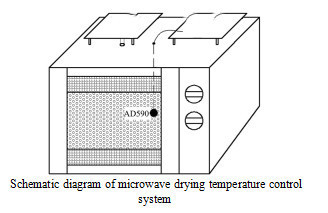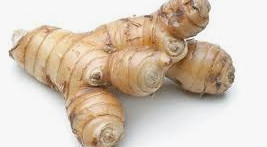
- Shandong Microwave Machinery Co.,Ltd.
- To be the Leader of microwave drying and edible oil refining equipments Manufacturer
Home> Company News> Effects of drying methods on physicochemical properties of Alpinia officinalis Tablets
- AddressNo. 225, Huangqiao Village, Beiyuan, Tianqiao District, Jinan, Shandong, China
- Factory AddressNo. 225, Huangqiao Village, Beiyuan, Tianqiao District, Jinan, Shandong, China
- Phone(Working Time)+86 0531 85064681
- Phone(Nonworking Time)0086-15020017267
- Fax+ 86 0531 85064682
Effects of drying methods on physicochemical properties of Alpinia officinalis Tablets
2019-01-10 15:36:14ABSTRACT: Objective: To explore the changes of physical and chemical properties of Gaoliangjiang tablets before and after drying, and to determine the best drying method for quality assurance.
METHODS: The effects of six drying methods on the color, total phenol content, total flavonoid content, galangin content and volatile components of Alpinia officinalis Tablets were investigated by chromatograph, ultraviolet spectrophotometer, high performance liquid chromatography and solid phase microextraction-gas chromatography-mass spectrometry.

RESULTS: Freeze-drying had the largest comprehensive retention of total phenols, total flavonoids and galangin, which were 20.95 (+0.13) mg/g, 12.19 (+0.01) mg/g, 11.45 (+0.03) mg/g, followed by vacuum heating drying, hot air drying, microwave drying equipment, sun drying and natural air drying, and the peak area of volatile substances after natural air drying and sun drying was higher. The peak area statistics of the other four drying methods had little difference; the color of microwave drying was the darkest, the red and green value a* was 13.92, followed by hot air drying, and the color of freeze drying was the lightest.
CONCLUSION: Freeze drying can be used for high-end products regardless of cost, solar drying can be used for environmental protection and energy saving, and traditional hot air drying is recommended for general industrial production.
Key words: Alpinia officinalis microwave drying; drying method; total phenols; total flavonoids; galangin; color; volatile components

Alpinia officinalis is a dried rhizome of Alpinia officinalis. It is mainly produced in Guangdong, Hainan, Fujian, Yunnan and Taiwan. It is one of the commonly used Chinese medicines. It is reported that Alpinia officinalis has strong pharmacological activity. Its extracts have many biological activities, such as anti-bacterial, anti-oxidation, anti-emetic, anti-cancer, anti-gastrointestinal ulcer, anti-thrombosis, lowering blood lipid and cholesterol, anti-gastric mucosal injury and alleviating bronchial inflammation. At present, Alpinia officinalis is widely used in food, cosmetics and other fields besides being the main raw material of Wanjin oil, a world-famous Chinese medicine.
Studies have shown that the chemical constituents in Alpinia officinalis are very complex. The active constituents isolated from Alpinia officinalis are mainly volatile oil, flavonoids and diphenylheptane, followed by glycosides, sterols and phenylpropanoids.
Alpinia officinalis is a precious Southern medicinal resource, which is distributed in tropical and subtropical regions. However, the quality and efficacy of Alpinia officinalis var. officinalis var. officinalis var. officinalis var. regions. Among them, Longtang Town, Xuwen County, Guangdong Province, produces the best quality of Alpinia officinalis, which is the gen
Because Alpinia officinalis is not tolerant to storage and easy to mildew after harvest, most of its dried pieces or powder are exported to foreign countries in Xuwen area. Therefore, the changes of physical and chemical characteristics during drying process have an important impact on the export quality of Alpinia officinalis.
This study will compare the changes of total phenols, total flavonoids, galangin, volatile components and color difference of Alpinia officinalis Tablets before and after six drying methods of hot air, freeze-drying, vacuum heating, sun, air-drying and microwave, and find out the drying methods with high preservation rate of active components and suitable for industrial production, so as to guide the primary processing of Alpinia officinalis and the production of dried products, and then obtain the results. Higher quality ginger slices, dried powder and other products.
 High efficiency food beverage factory stone paper production line
High efficiency food beverage factory stone paper production line Factory price Fully automatic Machine PP/PS Plastic Sheet Production Line
Factory price Fully automatic Machine PP/PS Plastic Sheet Production Line used deformered bar rolling mill production line
used deformered bar rolling mill production line Manufacturing plant automatic factory puffed sticky rice cracker production line
Manufacturing plant automatic factory puffed sticky rice cracker production line Production Line Pp Ppr Plastic Pipe Making Machine 20-63mm Multi-layer Extrusion Production Line For Water Supply
Production Line Pp Ppr Plastic Pipe Making Machine 20-63mm Multi-layer Extrusion Production Line For Water Supply